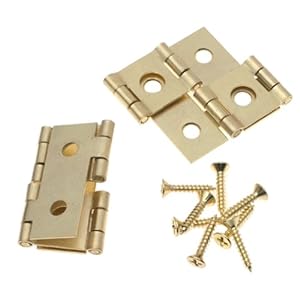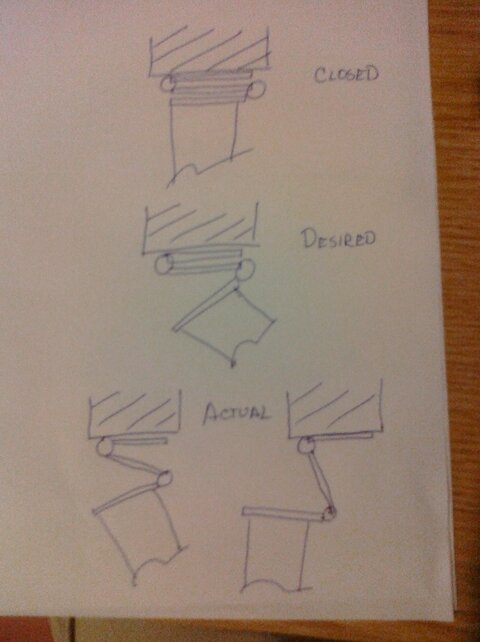Should be a simple find for me, but so far it's eluding me. I'm looking for a double hinge, bi fold hinge, folding screen hinge, or any other name it has, that will work for somewhere around 2" of material. I can find some up to 1 1/4", but none larger. The length does not matter, just the material size of just under 2" that it will accept, and still be able to go 180 degrees in either direction. This is for an outside festival, so it, and any other suggestions which I am more than willing to try, have to hold up to the elements for 2 months or so. Thanks :->
You are using an out of date browser. It may not display this or other websites correctly.
You should upgrade or use an alternative browser.
You should upgrade or use an alternative browser.
door hinge question
- Thread starterJohnEstep
- Start date
McMaster-Carr has some spring hinges that will accomodate doors up to 3-31/32". You didn't specify if you need them to be sprung, but you can always leave the springs slack on the adjustable tension types if you can't find a suitable (cheaper and less bulky!) unsprung two-way hinge.
As best I can remember, this type is adjustable down to almost, but not quite, zero tension.

Double Acting Spring Hinges - Double Acting Barrel Hinges | HardwareSource.com

Double Acting Spring Hinges - Double Acting Barrel Hinges | HardwareSource.com
JChenault
Well-Known Member
yeah, I forgot to say no spring, but I might have to fall back on spring hinges, do they adjust to 0 resistance?
I think if you adjust to 0 tension, you will find you have a problem. When you are swinging the door you want to keep the hinge compact. IE the center section of the hinge wants to remain tight to the door ( or the frame). The only way I can see this being done is with a spring. This is one reason you don't see a lot of heavy doors that go both ways.
If you really want no spring, or if the door is heavy follow footers suggestion. Put a pivot at the top and bottom of the door, about an inch in from the ends of the door, and make a receptacle at the top and bottom of the door casing.
scenerymaker
Member
You could weld two butt hinges together to have a free-turning hinge that would allow your motion. You could also reduce the spring setting of the previously mentioned double hinge. To keep the door from sagging, bury a small caster in the bottom of the door on the side opposite the hinge..... still be able to go 180 degrees in either direction.
JChenault
Well-Known Member
You could weld two butt hinges together to have a free-turning hinge that would allow your motion.
If the door needs to fit semi-precisely in a door jam, or if you want the hinge side of the door to stay next to it's jam, I don't think the welding method will work. I have attached a sketch of my reasoning.
The top 'Closed' shows what you want the hinge to do when the door is closed. The 'Desired' shows how you want things to work when the door is open. The 'Actual' is what will typically happen if there is no spring tension. There is nothing to keep the hinge plates from separating.
Attachments
JChenault's illustration goes to show exactly how unique the double acting hinge is. Confounding, brain-bending things.

Amazon.com: Stanley Hardware 73-0200 Double Acting Hinge: Home Improvement
Odd they're never for larger than 3/4" stock.

Amazon.com: Stanley Hardware 73-0200 Double Acting Hinge: Home Improvement
Odd they're never for larger than 3/4" stock.
MarshallPope
Well-Known Member
Just a quick thought - would it work better of you did two of the welded-hinge contraptions one right above the other, reversed? In my head, it doesn't seem like it would be able to wander off that way. The only issue might be the offset in the hinges when opening.
Similar threads
Conventional Fixtures
Altman 1000 followspot operation/questions
- Replies
- 33
- Views
- 2K
- Replies
- 15
- Views
- 4K
- Replies
- 33
- Views
- 4K
Users who are viewing this thread
Total: 1 (members: 0, guests: 1)



